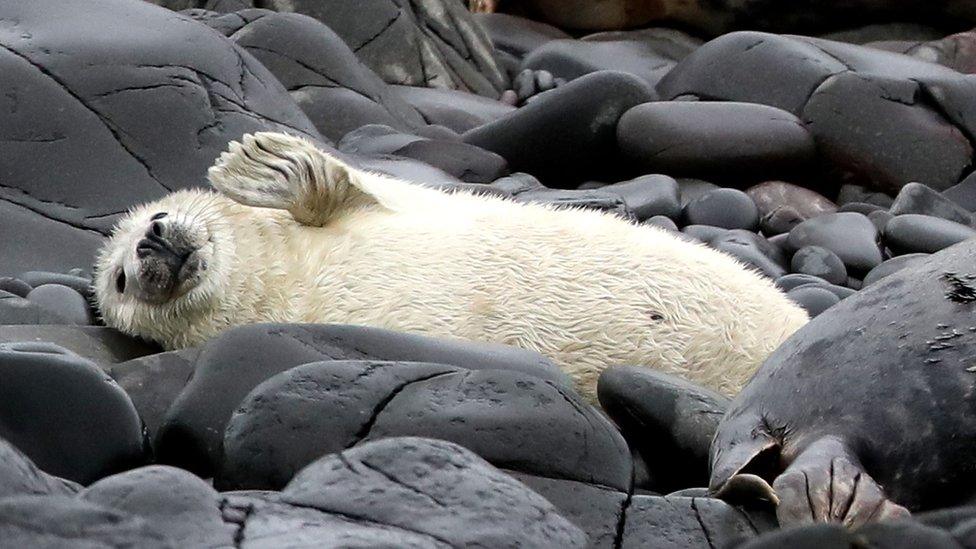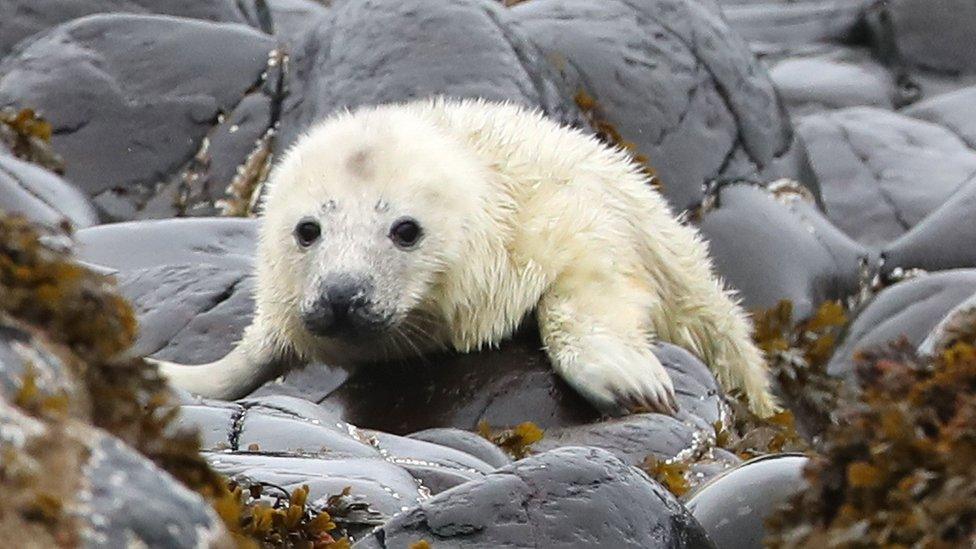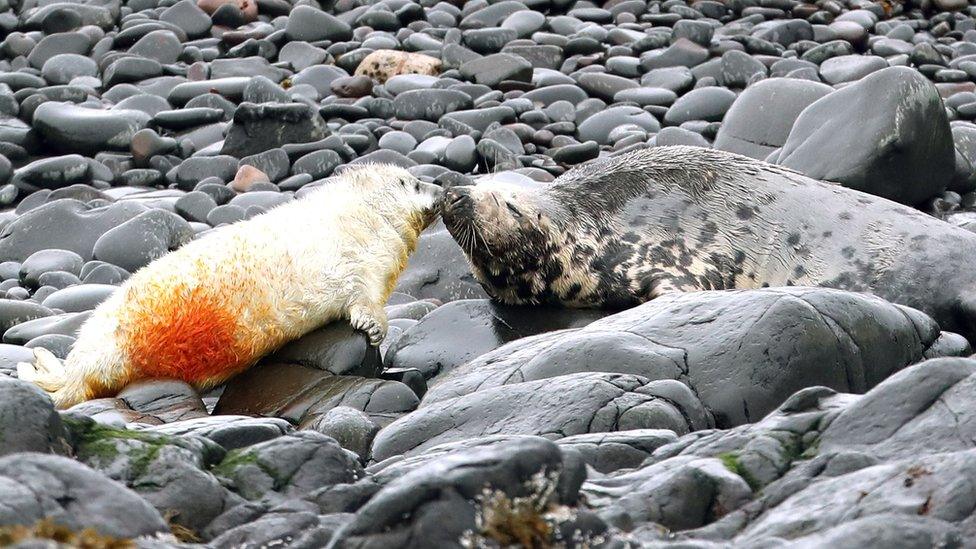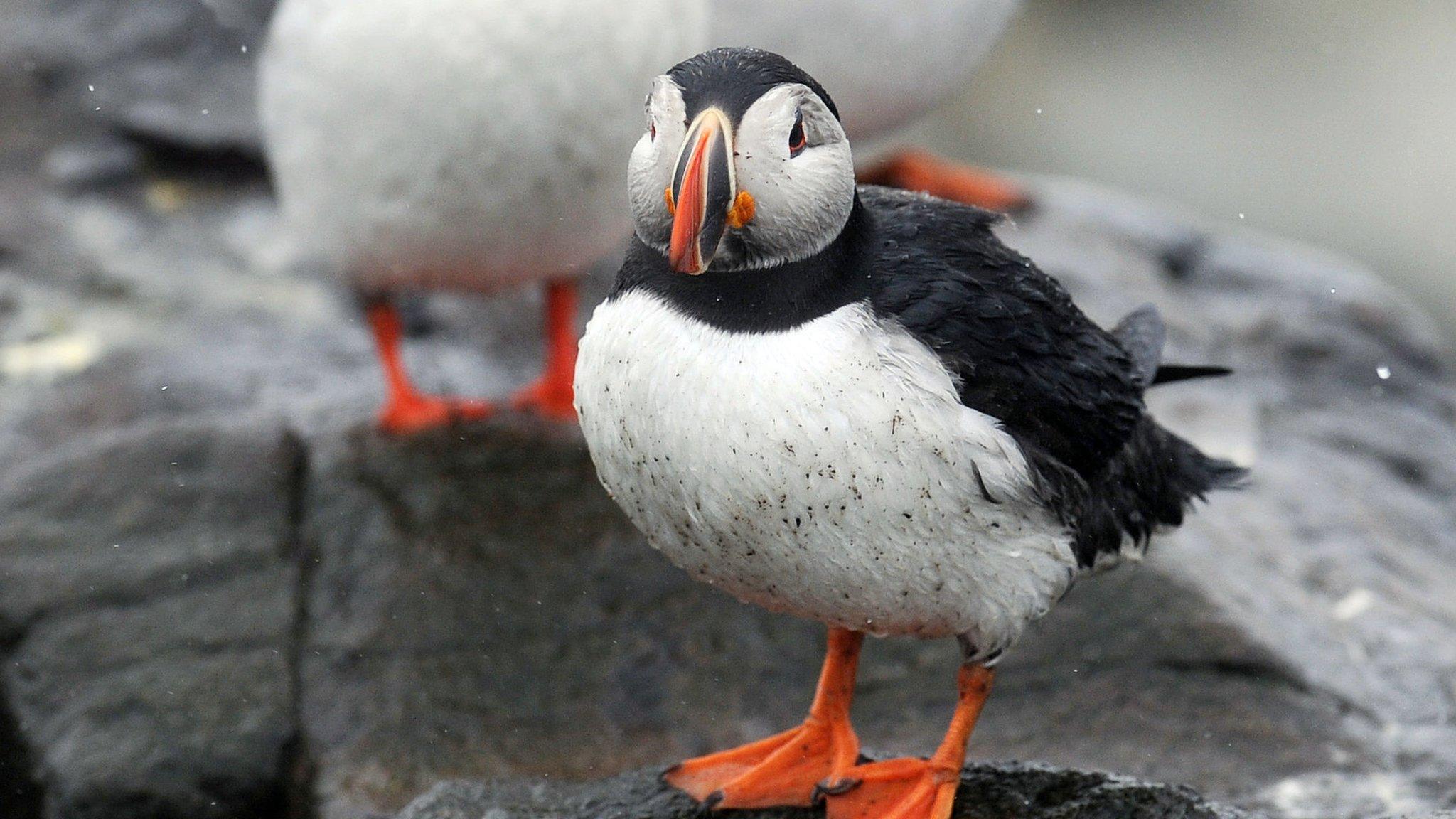Farne Islands seal pup census under way
- Published

The islands have an estimated population of 5,000 seals
The first seal pups of the year have been seen on the Farne Islands, triggering the start of the annual census of the animals.
Each year more than 1,500 seals are born on the islands, which are situated off the Northumberland coast and are managed by the National Trust.
Rangers spend two months each autumn monitoring what is one of the largest Atlantic grey seal colonies.
In 2015, 1,876 pups were recorded - the highest number since 1971.
The arrival of the pups begins as early as mid-September in some years and the majority are born in November, the National Trust said.

The seal pups put on weight rapidly in their first month
Ranger Ed Tooth said: "A lack of predators and a plentiful supply of sand eels and gadoids (cod) - which make up a majority of the seals' diet - has contributed to the success of the colony.
"The seals have also selected a different location for their rookeries, the breeding sites for the seals.
"This has resulted in mortality rates dropping, possibly because the islands offer better protection from storms and high seas."
The rangers, who live on the islands for nine months of the year, count the seals every four days.
The youngsters are sprayed with a harmless dye to show the week they are born to allow conservation staff to keep track of their numbers.

National Trust rangers spray the pups with a harmless red dye to help them keep track of their numbers
Mr Tooth added: "Waiting for the first seal pup to be born is always an exciting time of year.
"It's impossible not to be fascinated by the bright white, fluffy, wide-eyed pups even though we will hopefully see more than 2,000 pups over the coming weeks."
- Published19 July 2013

- Published14 January 2011